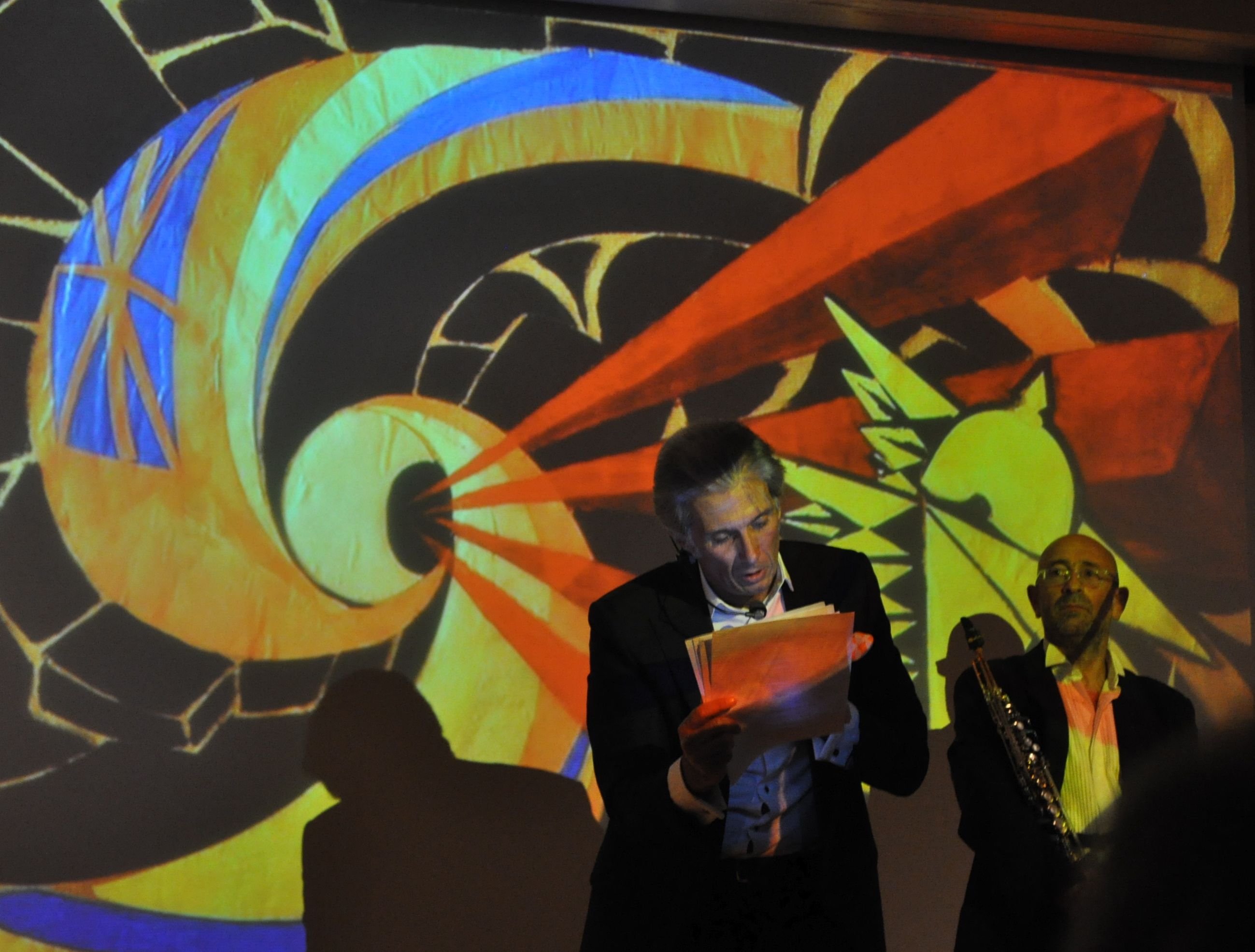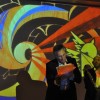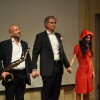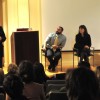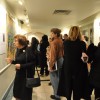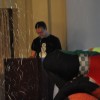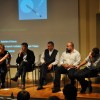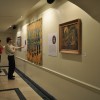The Casa Italiana Zerilli-Marimò Marks the Centennial of Futurism
A trilogy of events took place at the at NYU’s Casa Italiana Zerrilli-Marimò commemorating the centennial of the Founding Manifesto of Futurism. The celebration began with a Serata Futurista: a Futurist Lecture-Performance on Thursday, November 5th. The evening starred a dynamic Massimiliano Finazzer Flory (Commissioner for Culture of the city of Milan) with the accompaniment of Riccardo Bianco on saxophone and Michela Lucenti as dancer and choreographer. To a packed room, Massimiliano Finazzer Flory declaimed an anthology of texts including Marinetti’s Manifesto del Futurismo (1909), Manifesto of Futurist Dramatists (1915), and excerpts from Zang Tumb Tuum (1912), along with Palazzeschi’s The Sick Fountain (1909), and Papini’s Why I am a Futurist (1913). Meanwhile, behind the group of performers, images from works in the Museo del Novecento in Milan were projected. The museum itself is scheduled to open to the public in 2010 and will feature many important Futurist works.
- Watch video here
- “Massimiliano Finazzer Flory. Futurism Between Art and Politics” by Marina Melchionda (November 11, 2009)
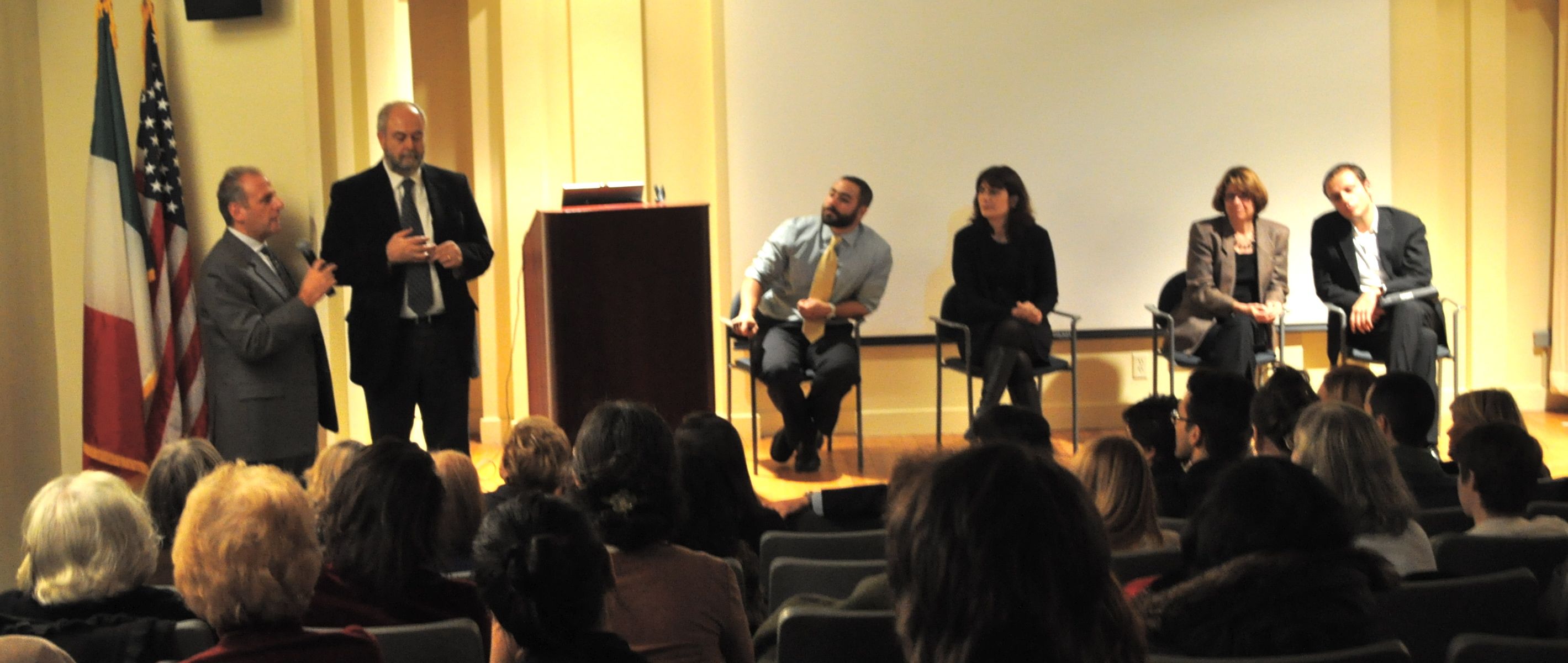 The following evening, Friday, November 6th, the inaguration of the exhibition Futuriste: Women in Art and Literature (November 9 – December 15, 2009) was preceded by a lively panel discussion on Futurism and Women, co-organized by Ara Merjian (NYU) and Stefano Albertini (Director, Casa Italiana Zerrilli-Marimò). The evening began with an introduction by Merjian on the complicated nature of women within the Futurist movement – having been complicit or subversive within it. Next, Giancarlo Carpi (with live translation by Albertini), co-curator of the exhibition, spoke about his newly published book Futuriste: Letteratura. Arte. Vita. (Castelvecchi, 2009) which contains a collection of primary source documents pertaining to the subject. Lisa Panzera (Director, McCaffrey Fine Art) then illuminated the relationship between the founder of the movement and Benedetta Cappa through a close inspection of her personal letters. Lastly, Christine Poggi (University of Pennsylvania) discussed the changing role of women during the war and urged scholars to view Futurist women as a diverse group rather than examine them together as a homogenous whole.
The following evening, Friday, November 6th, the inaguration of the exhibition Futuriste: Women in Art and Literature (November 9 – December 15, 2009) was preceded by a lively panel discussion on Futurism and Women, co-organized by Ara Merjian (NYU) and Stefano Albertini (Director, Casa Italiana Zerrilli-Marimò). The evening began with an introduction by Merjian on the complicated nature of women within the Futurist movement – having been complicit or subversive within it. Next, Giancarlo Carpi (with live translation by Albertini), co-curator of the exhibition, spoke about his newly published book Futuriste: Letteratura. Arte. Vita. (Castelvecchi, 2009) which contains a collection of primary source documents pertaining to the subject. Lisa Panzera (Director, McCaffrey Fine Art) then illuminated the relationship between the founder of the movement and Benedetta Cappa through a close inspection of her personal letters. Lastly, Christine Poggi (University of Pennsylvania) discussed the changing role of women during the war and urged scholars to view Futurist women as a diverse group rather than examine them together as a homogenous whole.
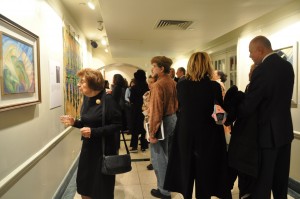 Following these presentations, Umberto Croppi, Commissioner for Culture and Communication of the city of Rome, officially inagurated the aforementioned exhibition Futuriste: Women in Art and Literature while highlighting the significance of New York as the location closing of a year of futurist celebrations – begun in Rome as part of FUTUROMA, earlier this year – due to both the city’s dynamism as well as the historic reception of the movement in the United States.
Following these presentations, Umberto Croppi, Commissioner for Culture and Communication of the city of Rome, officially inagurated the aforementioned exhibition Futuriste: Women in Art and Literature while highlighting the significance of New York as the location closing of a year of futurist celebrations – begun in Rome as part of FUTUROMA, earlier this year – due to both the city’s dynamism as well as the historic reception of the movement in the United States.
The exhibit itself – a collaboration between the Casa delle Letterature of Rome and NYU’s Casa Italiana Zerilli-Marimò – is a real gem and I urge anyone in the area to check it out. While small, the exhibition includes, among other very interesting pieces, the iconic portrait of Marinetti by Rougena Zátková. Co-curated by Giancarlo Carpi, Maria Ida Gaeta (Director of the Casa delle Letterature of Rome) and Stefano Albertini (Director of the Casa Italiana Zerilli-Marimò) – the exhibit is furthermore accompanied by a beautiful bilingual catalog (64 pages, color) with biographies of the 11 included artists and beautiful reproductions of their works.
On Monday, November 16th, the Casa Italiana again hosted a discussion – this time with a very different focus, organized by Ara H. Merjian, titled The Future in Five[?] Senses: Echos of Italian Futurism in New York Architecture and Design, which meditated on the idea of architecture as lending itself to a multi-sensory experience.
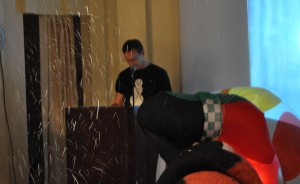 Merjian opened the discussion with interesting comparisons including that of the sculpture of Fiorello LaGuardia and Boccioni’s Unique Forms of Continuity in Space as well as works by Richard Rummel and Sant’Elia, referencing Joseph Stella and Fortunato Depero along the way. Rodolohe el Khoury (Architecture, University of Toronto) presented his projects for scent-gardens – landscape architecture as an olfactory experience. Next, Ted Sheridan (Ryall Porter Sheridan Architects, NY) presented some of his projects based on buildings and locations found in New York, which when altered, introduce new sounds into the urban environment. Andre Lepecki (Performance Studies, NYU) prefaced his reading of a short story, which was based on a critique Rem Koolhaus’ “Delirious New York,” with an audio recording of a woman discussing the role of the feminine voice. Lepecki’s story included an examination of the visual interpretation of maps, specifically, that of pre-earthquake Lisbon and the ability to read this map as New York, highlighting the city’s ability to absorb many interpretations. Lastly, artist David Humphrey closed the evening by examining the tactile qualities of art, while concurrently inflating a giant snowman and raining snow upon the audience – thus turning the lecture hall into a human snow globe.
Merjian opened the discussion with interesting comparisons including that of the sculpture of Fiorello LaGuardia and Boccioni’s Unique Forms of Continuity in Space as well as works by Richard Rummel and Sant’Elia, referencing Joseph Stella and Fortunato Depero along the way. Rodolohe el Khoury (Architecture, University of Toronto) presented his projects for scent-gardens – landscape architecture as an olfactory experience. Next, Ted Sheridan (Ryall Porter Sheridan Architects, NY) presented some of his projects based on buildings and locations found in New York, which when altered, introduce new sounds into the urban environment. Andre Lepecki (Performance Studies, NYU) prefaced his reading of a short story, which was based on a critique Rem Koolhaus’ “Delirious New York,” with an audio recording of a woman discussing the role of the feminine voice. Lepecki’s story included an examination of the visual interpretation of maps, specifically, that of pre-earthquake Lisbon and the ability to read this map as New York, highlighting the city’s ability to absorb many interpretations. Lastly, artist David Humphrey closed the evening by examining the tactile qualities of art, while concurrently inflating a giant snowman and raining snow upon the audience – thus turning the lecture hall into a human snow globe.
In conclusion, the Casa Italiana Zerilli-Marimò – under the aegis of Performa 09 – did a spectacular job of commemorating both the anniversary of the founding of the Futurism by F.T. Marinetti, as well as taking on the important role of women within the movement.
– Jessica Palmieri
